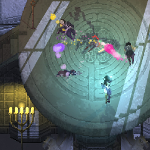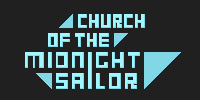Interview: Unsouled’s Jinsub Jung
As a 2D action RPG, Unsouled focuses on fast-paced, highly customizable combat. I chatted with developer Jinsub Jung on the focused nature of his project and the challenges he faces as he pushes ahead.
Erik Meyer: Unsouled excels as a fighting game in which the player character absorbs the souls of enemies to advance. Unlike games that try to include multiple other elements (like crafting, abundant NPCs, and sidequests, etc), the game stands on its well-developed combat system and engaging play. As an indie developer, how has this specificity helped you develop a unique project, and what do you see Unsouled gaining for its tight focus?
Jinsub Jung: Various games have been tried to add compelling elements to action games. Sometimes they have succeeded, but most of them come up short. Sometimes, I feel changes are made reluctantly to extend game playtimes.
Unsouled is intensively focused on “me” as a game player. Since I am indie-game developer, I can get rid of elements that I hate and concentrate on the “action” itself. Because of this, Unsouled does not have the path-finding and puzzle elements which I find boring; even where options like that exist, they should focus on spicing combat up. Only one thing I want to show through Unsouled is obvious. Fun comes from the action.
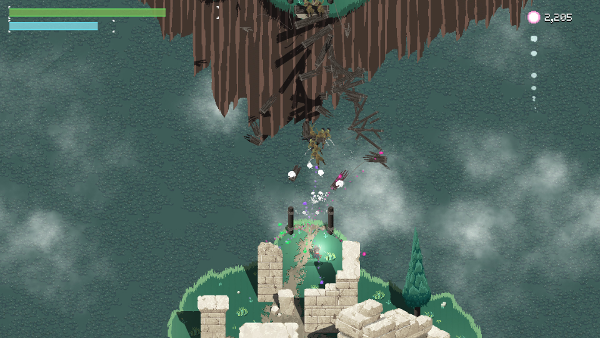
EM: You mention the inspiration of games like Onimusha 2: Samurai’s Destiny, albeit as a pixel game. Can you speak to the overall playthrough experience you’re aiming for, the combination of aesthetics, game feel, and satisfaction on the part of the player? What do you see Unsouled evoking that adds to the corpus of indie games?
JJ: I played Onimusha 1 and 2 for between 100-200 hours when I was teen; “il-sen” (Onimusha’s counter action) gave me the best catharsis I have ever experienced. The game stands as an action game pinnacle, and I want to reproduce that feeling with 2D action game. I even thought to create a 3D game, but I do have not enough experience to take that on, so I dropped it.
The other thing that drives me is combo action from 1 on 1 fighting games.
Personally, I am from the generation playing 1 on 1 titles like Street Fighter, Tekken, and Virtual Fighter; I still dream of attending EVO one day. (I’ve played SFV for more than 400 hours, and my rank is around 5000, my grade is Diamond.)
With this accumulated knowledge and experience, I tried to implement the “action fitted” fighting game combo style with Unsouled. Most action games’ combo designs are getting easier to use, such as one button activating critical arts.
Unlike this trend, Unsouled is designed needing accurate input and timing to successfully land combos. Super play with counterattacks and stylish actions with chain combos are the best things Unsouled can provide. I would be satisfied if people remember my game, saying, “It implements advanced action well.”
EM: You’re a one-man team, so I’m curious about your process. What limits do you experience as a singular developer? What freedoms do you enjoy, not having to coordinate, and how has this development aspect impacted the title you’re creating?
JJ: I was a private banker and don’t have any game development background. Although I released a mobile puzzle game, it did not make a big splash. Who would want to work with me? (I have less experience with team dynamics.) This left me with little choice except a one-man team where the only limitation is time. Of course, there are many quality issues on art and sound, but I have a strange sense of confidence that I can get though that well.
I think this hardcore-style action game was largely able to be developed because of my one-man team dynamic. More people need to earn more money. It means the game has to be more “casual” or “easy to play”. Even if this is not true, a team has to think of more safe ways to develop a game, and this can kill game specialties.
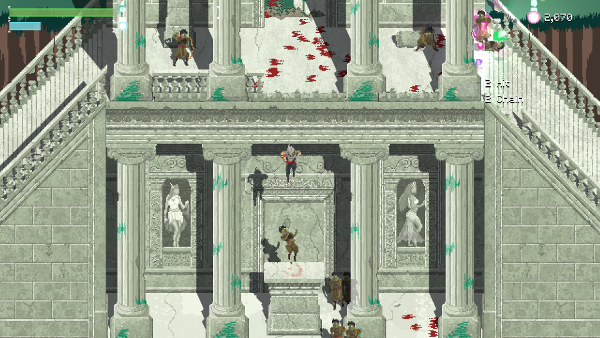
EM: One interesting aspect of the game is the destructible elements, so from an implementation standpoint, how has adding features like trees being cut down or railings falling away come with challenges? How do you balance the time required to fully realize a cool feature versus the impact it will have on the game?
JJ: Every destructible element is developed from a level-design standpoint. For instance, not only can a cut-down tree damage an enemy (or a player), but it also can block enemy projectiles. Also, destructive railings are not only for good hit-feel, but after breaking railings, players can push enemies over cliffs. Players can design the battles in more favorable ways with interactive environments.
I am not trying to let these features be eye-candy things. I rather design and place elements for rich combat.
Because of this clear target, if I think a feature is good for a new combat experience, I don’t care about how long it takes.
(But it is so true that it takes too much time. Destructible railings brought my eyelid twitch back.)
EM: As mentioned, the combat control system features drive the game, which includes an ability to design combo moves. Describe the nuances of the combat system itself – what kinds of things will encourage replay value, and what different kinds of play do you expect the gamer community to generate?
JJ: The game action has two main branches.
One is “chain”. Each skill has its own chain timing. When a player inputs a skill command during chain time, the skill starts without a former skill delay. A player can design his own combo moves by using a chain. However, timing is not easy, and some skills have difficult skill commands. Because of this, a player needs to spend time getting used to chain timing. The chain gives high amounts of damage, but stamina can be used up easily. Since some skills can recover stamina, the player has to design combos, including these stamina-recover skills.
The other action is “counter”. Just before you get hit, pressing the attack button activates a counter action. It has about a 3-4 frame input duration for success. When it succeeds, it overpowers the enemy with huge damage. “Counter” also can lead to the “chain counter”, which is a serial counter action by pressing the attack button with the right timing. The “chain counter” action can even sweep all enemies in a screen.
These are the main actions that I expect the players to enjoy, replay and share. If people show off their “only counter super play” or “new combo moves”, it would be really satisfying to me as a developer. I’m trying to implement many in-depth combat systems as much as I can so that people can deeply delve into them. That’s why I added “training mode” in the game.
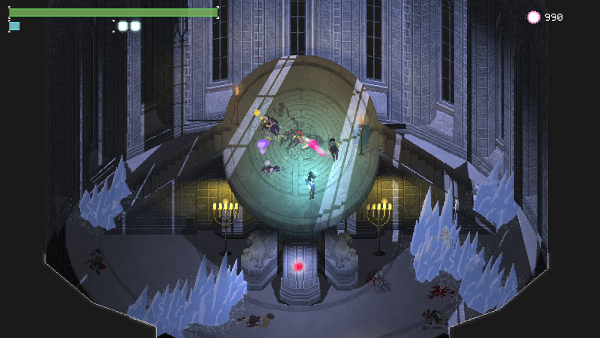
EM: From a design standpoint, the game appears clean and minimal, but it does include menus and the like, so what is your philosophy behind UI/UX?
JJ: My UI/UX philosophy is “simple is the best”. The UI development took a lot of time and created many small bugs. If the UI is visually too beautiful, as a one-man team, adding a function and editing something can be burden. I stay simple as much as possible and design for the least actions to access a desired function.
EM: You live in Seoul, South Korea, so can you describe the game culture and development community you live within? How much do you feel location plays a part in game designers leaning toward specific styles of play and graphical elements?
JJ: The South Korea game culture and indie developer community is so small; I think the game culture of South Korea is very rare and unique. Like other countries, South Korean game culture was greatly influenced by Japanese games. Nope, Japanese games were everything, especially in the 80s and 90s. Besides the creativity of games and geographical advantages, I guess cultural similarities made people like Japanese games more than western-culture titles. (The only western game I’d ever played was E.T., back then.)
Meanwhile, the media criticized the bad influences of video games; parents believed this because it seemed to corrupt child education. (South Korea still has a great deal of enthusiasm for education.)
With this, and with the internet spread out all over the country, the game industry was totally ruined by internet piracy.
However, there are many huge companies emerging with the successes of MMORPG games, and those company led to the online titles; they focus on mobile games, which can make more money.
On the other hand, PC-bang (Internet cafes) also were a growing trend, replacing arcades. (Which provided really good entertainment within South Korea’s strict and tight education circumstances.) With Starcraft, PC-bang located other way of enjoying gaming. And this tremendous popularity gave birth to an E-sport.
Because of these circumstances, gamers play major titles, and many teen gamers want to be pro-gamers. Relatively, indie games were not spotlighted, but the community began to grow when streamers took on famous overseas indie games.
The indie developer community was a more horrible situation. South Korea is not lenient with failures, whether it involves individual expression or government support. Because of this cultural background, less people start making an indie-game, rather than get a job at a big game company, which gives a stable salary and comes with respect.
After some overseas indie game developers made big successes and powerful engines like Unity and Unreal were released, the indie game developer community expanded slowly. However, it seems they focus on mobile clicker or idle games following money rather than the games that they actually want to produce.
As such, it factors in that South Korean culture and geography are weaknesses. The small market and language barrier and absence of Korean development/learning reference all play a part.
The one strong point is getting less hurt when you see hate comments in English.
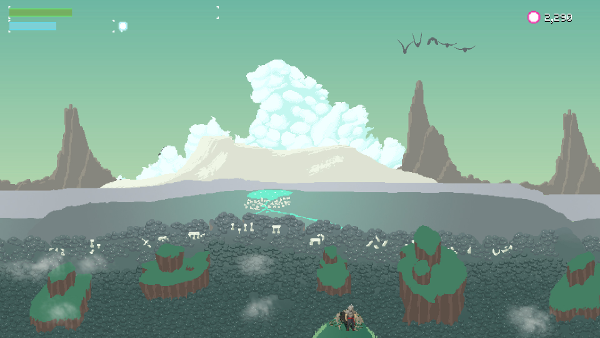
EM: As you look toward release, what does your pipeline look like? In terms of testing, honing, and polishing, how have you gotten the best feedback, and what are the next few things on your to-do list?
JJ: As one-man team, I am trying to build a structure, such that I can only focus on development. So, I’m looking for a publisher who can do the non-development aspects. There are few publishers I’m talking with.
So far, I get feedback from game expos (Bitsummit, BICfest, TPGS). But there is a limitation because Unsouled needs long play time to understand the system and get used to it. My close network of indie game developers helps in this shortage.
I think now Unsouled’s main system is ready; the next matter is content. I’ll focus on that for a while. And if I get the chance, I want to attend a western game festival one day.
In case you missed it, here’s the trailer:

